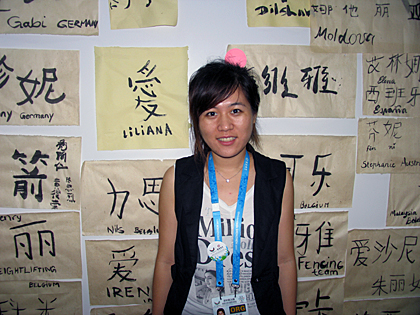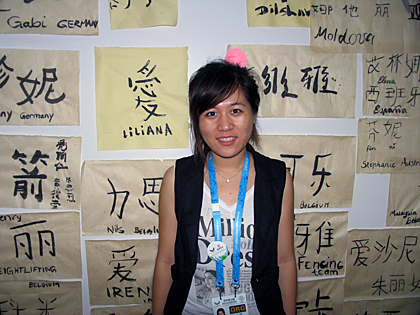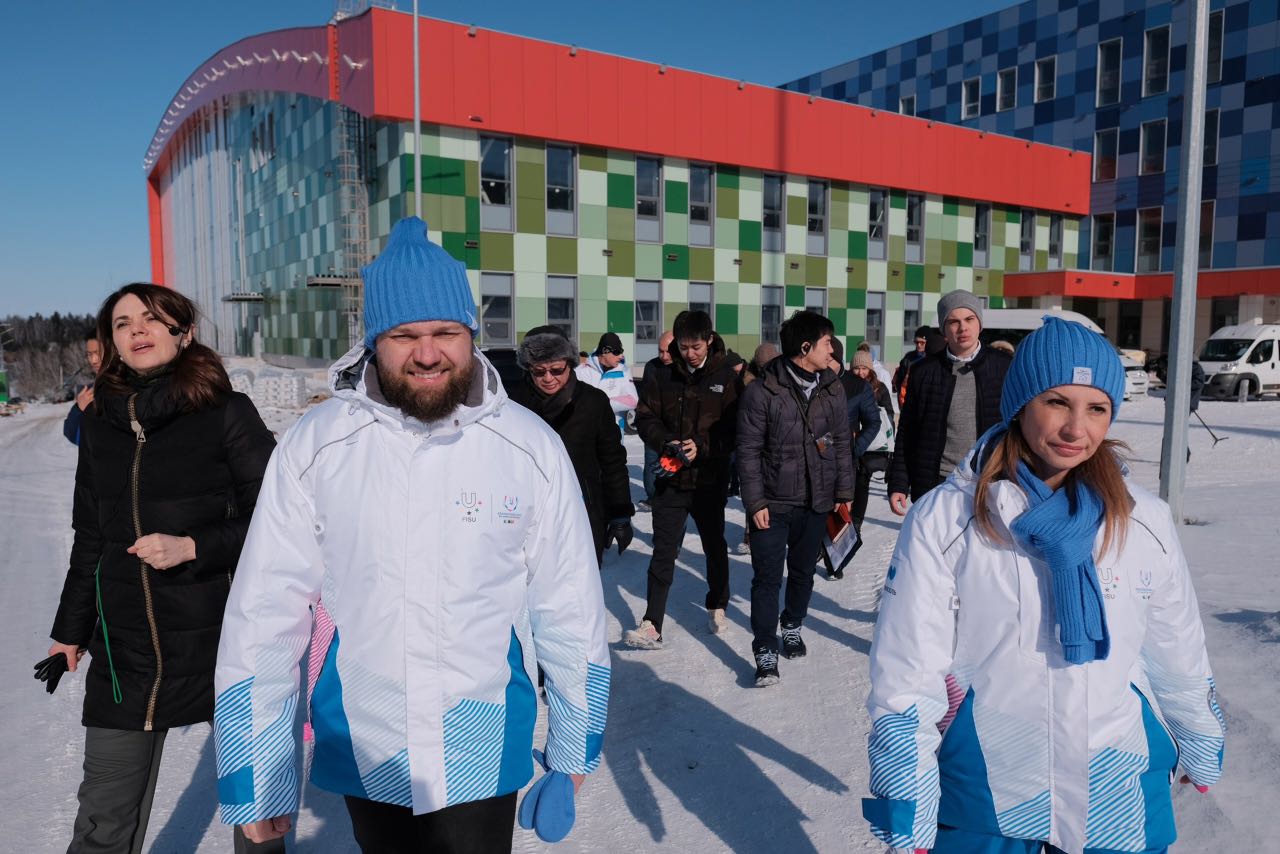 Chinese teacher Qing
Chinese teacher Qing
SHENZHEN – FISU-AIPS Young Reporter Natalia Donets set out on a journey to learn Chinese in the Athletes’ Village. She found out that it actually takes a lifetime. Read her story below.
Some of us are quite hopeless when it comes to foreign languages, but when it comes to such language as Chinese, even a most gifted student’s resolve might be shaken. Chinese language is a part of thousand years of history of the country, and a thousand years old legacy cannot be transmitted easily, let alone be learned in two weeks, a month, or a year. One of my friends’ acquaintances, a distinguished professor once said that he realized he actually knows Chinese only by the time he turned 60. That was after years and years of studies…
Wandering around the Universiade Village in search of a story, I was almost about to leave when it struck me. Some journalist covering the Universiade in Shenzhen has fleetingly mentioned a Mandarin Chinese language center in the Village. Naturally, I set off to find it.
The center is quite spacious. The walls are covered by hieroglyphs, some – printed, others drawn in black ink by the athletes themselves. The visitor’s wall is almost entirely covered. There are two teachers, a Chinese girl in a flowing ethnic dress and some other staff. As I enter, a lesson is already taking place, and it becomes clear why the place is so popular among the international athletes community. A girl from Denmark listens attentively, as a teacher explains the basics of Chinese calligraphy. A sheet of paper bears the marks of the athlete’s attempts to master perhaps the most difficult handwriting in the world. She is closely watched by two Chinese journalists, one of them waits for a short radio interview once the athlete is finished.
Noticing my interest Qing approaches, offering to give an introductory course to Mandarin Chinese as well. I agree, hoping that my teacher would have enough patience with me. As we sit down and begin, the Danish girl is joined by two Canadian swimmers who are also into the art of Chinese studies.
Qing begins by teaching me the basics of pinyin or, put simply, the Chinese language in Latin script. Without it, she says, it’s just impossible to master the language. As a Chinese Qing finds no problem in breaking down the rules of pronouncing pinyin correctly, but the locals devote 6 years to the study. Mastering the script could potentially mean an eternity is required … Those are the thoughts that are racing through my head when my teacher says this. How much time would a foreigner need to study Chinese? “Even I don’t know some of the hieroglyphs, there are literally thousands of them. Learning to write in Chinese is a hard work and there really is a long way to go and not just for a foreigner”. However, all of this doesn’t keep the athletes from visiting the centre and then coming back over, and over, and over again. The numerous signatures left by the grateful students are a perfect proof to that.
At some point things get absolutely hilarious, as both of us try laugh at my mistakes. As I listen back to a recording, it’s hard to keep myself from smiling. The mistakes are plentiful, but each word or sound pronounced correctly gives a sort of childlike glee, Chinese really is fun!
It is an art and Qing is very patient as she explains the 4 basic tones in Mandarin, as I have learned previously a wrong tone on the same word might add an unwelcome meaning. Involuntarily I switch from one tone to another, although I know how words are supposed to sound the first attempts to pronounce them sound nothing short of ridiculous! Some say that the knowledge of Russian gives an advantage when you attempt to learn Chinese, true enough, there is some pronunciation similarity, and yet sometimes it’s not your mind, but your body plays tricks. Tricks that force you to make mistakes… A fair number of sounds in Chinese are pronounced without moving your tongue, and it really is a challenge to actually try to control it. Thankfully, Qing has been putting up with me for an hour! The experience does give me the ultimate respect for those who managed to learn Chinese on their own.
As I prepare to leave I ask Qing why did she choose to work at the Village? “It’s a great opportunity to make foreigners learn some Chinese and something new about Chinese culture”. It certainly is and the work of the centre deserves a round of applause.
As the Canadian swimmers are about to leave, I try to ask what they thought about the work. “We’re a bit late, but I’ll definitely be back”. I am sure to be heading back myself, to see Qing and write my name in black ink just the way she taught me – from left to right, from top to bottom.
(Source: Natalia Donets, FISU-AIPS Young Reporter/Russia)




